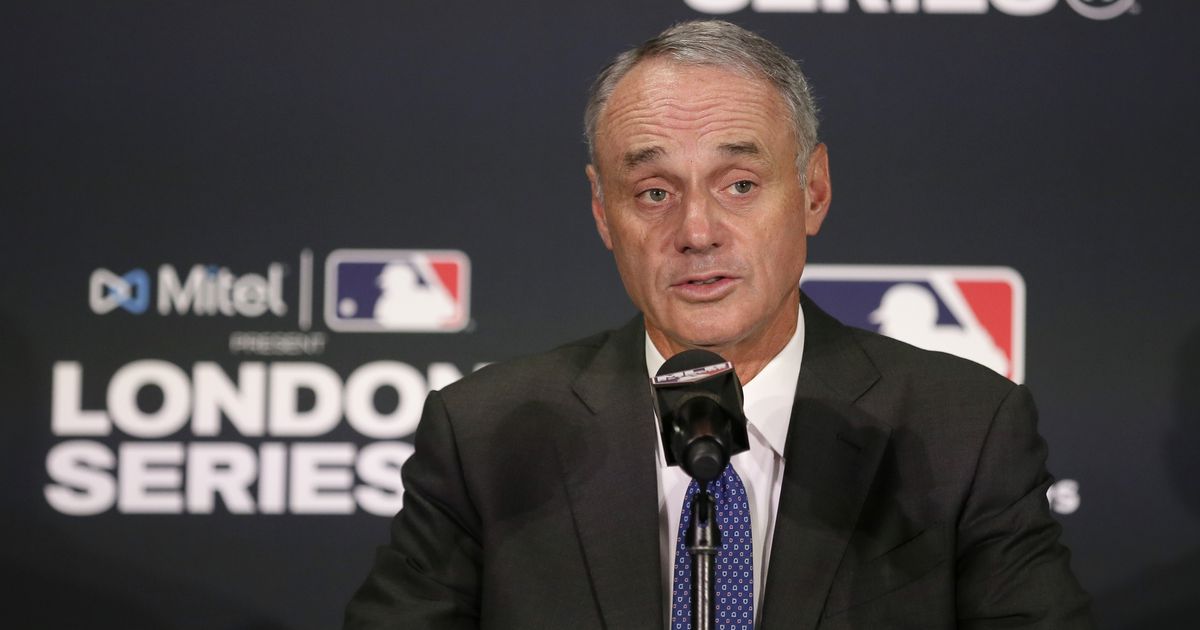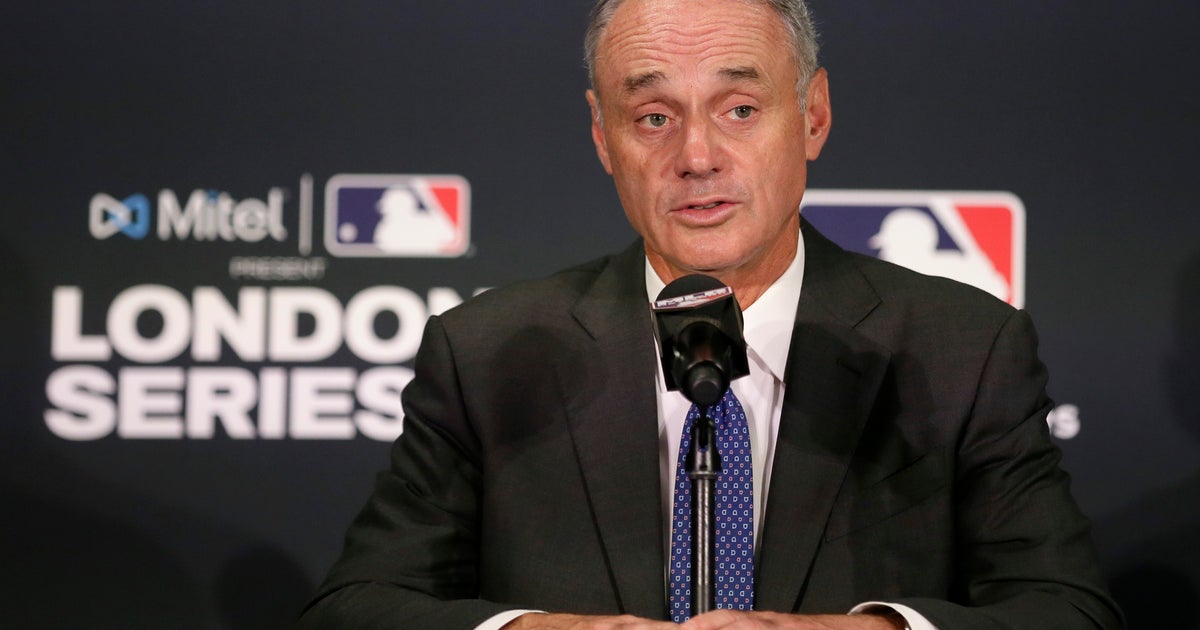MLB union wants more competition, more money for young stars


CLEVELAND (AP) — The baseball players’ association has outlined goals for the sport’s unprecedented midterm collective bargaining, objectives likely to meet resistance from management unless the union is willing to make trade-offs.
Baseball’s five-year labor contract expires in December 2021, but the sides agreed March 8 to open negotiations early. Baseball commissioner Rob Manfred said management and the union have had only one preliminary meeting in the nearly 1½ years since management first discussed early bargaining. The sides are exchanging dates for possible bargaining sessions.
“We are interested in re-establishing a competitive environment,” union head Tony Clark told the Baseball Writers’ Association of America on Tuesday. “We are interested in restoring meaningful free agency. We are interested in getting players something closer to their value as they are producing it. We are interested in ensuring that the best players are on the field at all times. We are interested in improving the dynamic for entry-level players. And we are interested at getting to a point where how our game is marketed and how our game is promoted is something that is more beneficial than where we currently sit.”
Following decades of growth, payrolls have remained in the $4.1 billion range since 2017, according to figures compiled by the commissioner’s office, and players have complained about two straight slow free-agent markets. The union accuses clubs of holding top prospects in the minor leagues to delay their eligibility for salary arbitration and free agency, and it ties rebuilding teams to non-competitiveness and four straight seasons of decreasing attendance.
Baseball’s three-tiered economic structure has been in place since 1976: players make at or close to the minimum salary for their first few seasons; they become eligible for salary arbitration at some point from two to three years of major league service; and they can become free agents when they have six years of service.
Luxury tax surtaxes and restrictions on signing bonuses for amateur players have led to market changes after the 2011 and 2016 agreements.
“I would like to see the system work the way it was intended to, yet reflective of the trends that we are seeing now,” Clark said. “So do I believe that’s a whole-hearted overhaul? Not yet. Is that a conversation we may end up having if we can’t find common ground? Perhaps.”
Clark said players want “less restraints, more acknowledgement of the value being created as it’s being created, such that there is a fair consideration across the service time spectrum.”
Manfred did admit the significance of youth on rosters had grown.
“It is undeniable that young players are getting to the big leagues and making a mark on the game sooner. I actually see that as a positive,” he said. “It allows clubs to turn themselves around faster. And I also think it’s a positive in terms of the marketing of the game. I think these young players have brought a level of excitement to our sport.”
Manfred and deputy commissioner Dan Halem met with Clark in Florida during spring training in 2018 and asked for specific proposals.
“Never in the history of any of the prior deals, some of which were not particularly good for the owners, did the MLBPA come to us and say, ‘We’re prepared to discuss your concerns midterm,’” Manfred said. “It is unprecedented and it started not because Tony came to us, it started because we went to him.”
Many free agents did not strike deals until spring training in 2018 and ’19. Many veterans found themselves with shorter terms and lower salaries than they were expecting.
“It produced the contracts that Mike Trout got, that Bryce Harper, got that Manny Machado got,” Manfred said. “If in fact Tony has an idea about how he wants to make that process different, we’ve told him — and so I’m willing to say it here — you need to tell us what mechanisms you think will address your concerns about the market.”
Manfred said clubs make roster decisions far differently than a decade ago.
“They manage it based on data, analytics, algorithms that did not exist 10 years ago, and when people manage based on data and actual information as opposed to a gut feeling as to how the future’s going to turn out, I think there is more consistency in the way clubs approach and value individual players.”
Baseball’s slow free-agent market contrasts with that of the NBA, which gained a flurry of publicity when its free agents started signing this month.
“We have the freest free agency that’s out there, and when you negotiate that kind of market, the market’s going to play out how the market plays out,” Manfred said.
While baseball players have opposed a salary cap, Manfred smiled when he said, “I could get the owners to support a system with a cap and a floor.”
Extending the designated hitter to the National League will not be a part of the midterm negotiations.
“It’s a major concession to the MLBPA, let’s be clear about that,” he said. “And there was nothing out there in the mix of issues that we were discussing midterm that made sense. I think it’s probably a ’20, ’21 issue before anything else meaningful happens.”
Manfred said he is inclined to recommend to owners that they exercise their right to institute a rule for 2020 requiring pitchers to face at least three batters, unless they are injured. Clark said there was time to have additional conversations.





